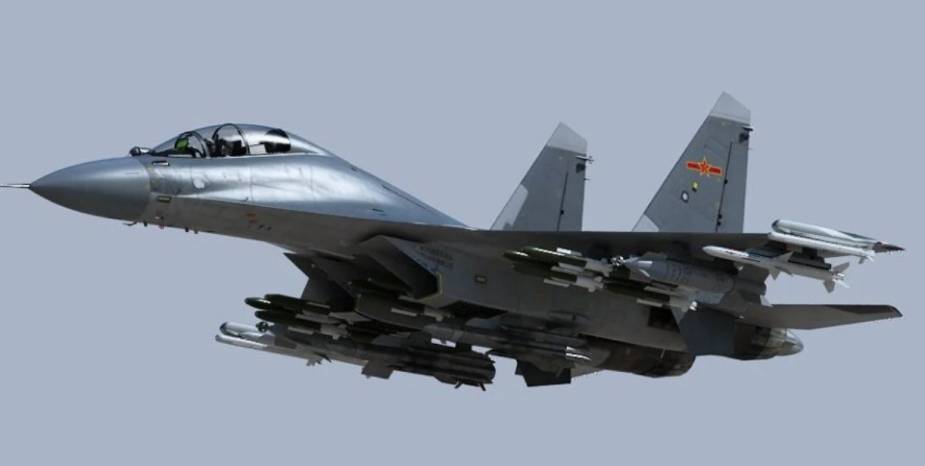According to Liu Xuanzun in Global Times, the J-16D, the electronic warfare variant of the Chinese Air Force's J-16 fighter jet, will make its debut at the Airshow China to be held from September 28 to October 3 in Zhuhai. This indicates that the aircraft is in service with the People's Liberation Army (PLA) and will give it an edge in electromagnetic space with powerful jamming capability.
Follow Air Recognition on Google News at this link
 Shenyang J-16D electronic warfare jet (Picture source: PLA)
Shenyang J-16D electronic warfare jet (Picture source: PLA)
The Shenyang J-16 is a tandem-seat, twinjet, multirole strike fighter developed from the Shenyang J-11 and built by Shenyang Aircraft Corporation. The two-seat Red Eagle is roughly comparable to the American F-15E and improves upon the Russian original with new avionics including an Active Electronically Scanned Array radar (AESA), the current state of the art in fighter-based radar technology. While China has had major problems developing reliable high-performance jet engines, it’s more successful at producing advanced electronics.
The J-16D is a variant of the two-seat J-16 Red Eagle strike aircraft, itself a Chinese copy of the Russian Sukhoi Su-30MKK Flanker. The J-16D variant — the “D” in the designation comes from the Chinese word for “electronic,” diànzǐ — made its first flight on December 18, 2015. It is a domestically developed electronic warfare aircraft based on the J-16 fighter jet. One of the most distinguishing characteristics of the J-16D, compared to the original J-16, is the two large electronic warfare pods on the aircraft's wings, which will be used to disrupt and jam hostile electronic equipment, including radar and communications systems, analysts said, noting that it also canceled the original infrared search and track sensor in front of the cockpit since its main role is no longer air-to-air combat.
Liu Xuanzun goes further in describing the J-16D mentioning that it is also equipped with a new avionics system and domestically made engines. It has undergone significant structural changes, including the use of a large number of composite materials, Wang Ya'nan, chief editor of Beijing-based Aerospace Knowledge magazine, told the Global Times on Wednesday.
















